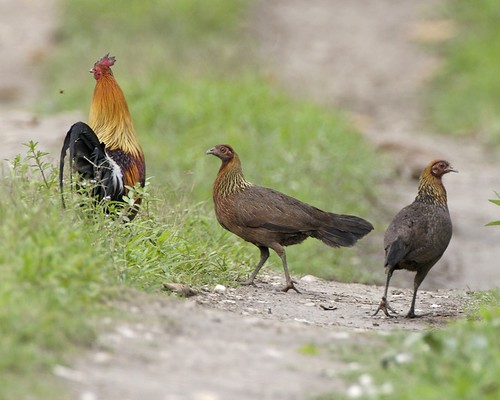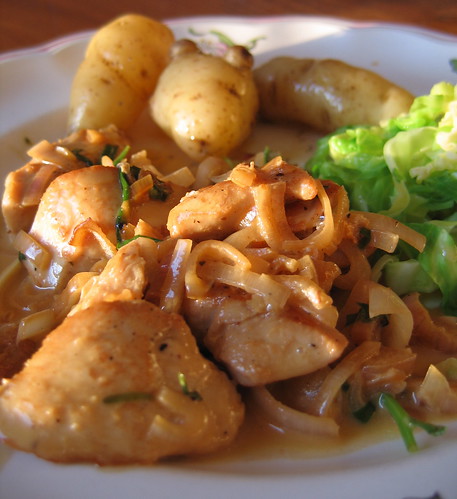My two-year-old niece could identify this one:

Except she’d be WRONG.
Sort of. Because this is not just any old chicken; it’s a Red Junglefowl, Gallus gallus, the wild ancestor* of everyone’s favourite kind of meat regularly served by the bucket.†
It’s an Asian species, and according to Wikipedia was probably domesticated in Vietnam 10,000 years ago; it reached Europe about 5000 years ago and was probably brought to Britain by the Romans. So they’ve been living around us for a very long time now, pecking around in our courtyards, supplying us with eggs and meat and exciting new strains of influenza. In some ways the most surprising thing about them is how familiar-looking they are: after millennia of domestication, the cock junglefowl (junglecock?) could still pass unnoticed in a farmyard.
The females look a bit more wild, I think; without all the distracting familiar cockerel plumage you can see the shape of the bird and see its relationship to pheasants and partridges:

However, the Red Junglefowl is ‘endangered’ by interbreeding with domestic chickens. There are plenty of junglefowl living wild out in the forests of southeast Asia, but not surprisingly, they tend to breed with free-ranging chickens. There’s something slightly weird about hearing conservationists worrying about the genetic purity of wild populations; obviously if there’s any value in preserving wild animals, I guess that implies preserving them as they are, but still there’s something just a little bit, um, Nazi about these attempts to maintain the blood-purity of the Red Junglefowl, or the White-headed Duck, or the Florida panther.
* Though possibly with a bit of Grey Junglefowl thrown into the mix.
† Or indeed in a basket, in the dish known as ‘chicken in a basket’. Which used to be a staple of English pub food, but which I haven’t seen for years. I think it’s probably gone the way of gammon and pineapple.
» Red Junglefowl (Gallus gallus) male 2 and Red Junglefowl (Gallus gallus) family are © Lip Kee Yap and used under the CC by-sa licence.
